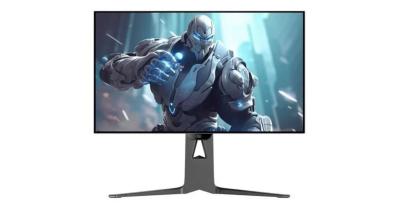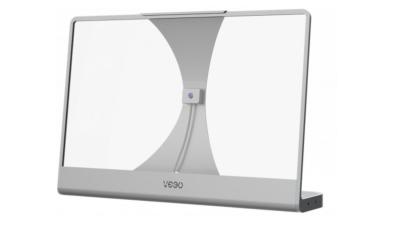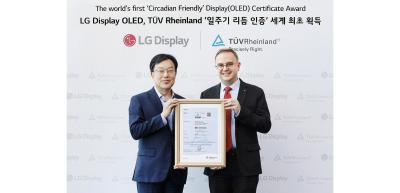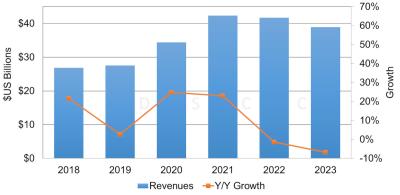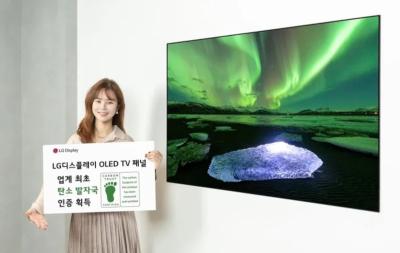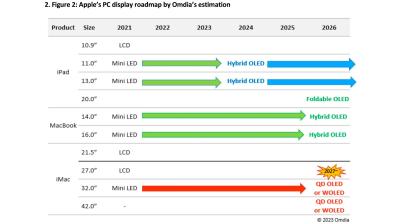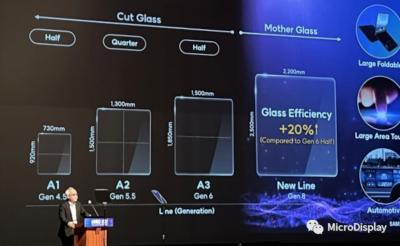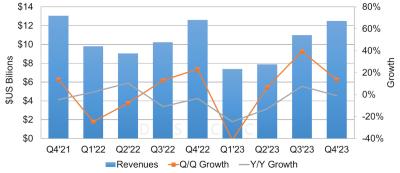OLED (Organic Light Emitting Diode) technology offers bright, efficient and fast displays, outperforming LCD display. OLEDs deliver the best picture quality ever and are used in many devices, from smartwatches through smartphones and tablets to TVs and more.
OLEDs are also used to enable high-end monitors that offer excellent contrast, image quality, colors and new form factors. This article will explain the benefits, the current status and the future of OLED monitors.
OLED monitors vs LCD monitors
- OLED provide a better image quality with a much higher contrast (true blacks), wide color gamut, better viewing angles and a much faster refresh rate (great for gaming!)
- OLED panels are much thinner and lighter compared to LCD panels
- OLED monitors consume less power - as only lit pixels draw energy on OLED displays
- An OLED monitor can be flexible, bendable, rollable - and transparent
OLED monitors and the burn-in challenge?
Of course OLED technology is not perfect. One of the major drawbacks of an OLED display is image retention / burn-in. In an OLED display each pixel is driven independently and each pixel ages differently - and as brightness is reduced with use (the lifetime of OLED materials is limited), we have burn-in problems.
For mobile phones and TVs this is less of a problem - but in a computer user interface many UI elements are quite fixed (toolbars, icons, etc) which means that burn-in is a real problem. There are some technologies to handle this problem - for example by measurement and compensation, or by adopting a tandem architecture to increase the lifetime. In addition user-interface designers can design a user interface that will be more suited for OLED displays.
OLED monitors on the market
OLED technology is very popular in smartphones, wearables and TVs - and in recent years OLED monitors has entered the market as display makers now target this market, starting with high-end models aimed towards gaming and content creation.
Display makers LG Display, Samsung Display and others target premium applications and mostly produce OLED panels in the range of 27-inch to 42-inch. One example of an OLED monitor is the ViewSonic VX2776-2K-OLED, based on a 26.5" 1000 nits (HDR) 2560x1440 240Hz 0.03 ms G2G VRR WOLED display (made by LGD).
Asus has several OLED monitors. The PG32UCDM and PG34WCDM are two gaming monitors, each based on a different OLED panel technology. The PG32UCDM uses a 32" 4K (3840x2160, 16:9) 240Hz VRR 1000 nits (HDR peak) QD-OLED panel, produced by Samsung Display. The PG34WCDM monitor, on the other hand is based on a 34" 3440x1440 (21:9) 240Hz VRR 1300 nits (HDR peak) MLA (microlens) WOLED curved (800R) panel, produced by LG Display.
Samsung has its own high-end OLED monitor, the Odyssey OLED G95SC. This is an ultra-wide gaming monitor based on a 49-inch 5120x1440 resolution, 240Hz, 1800R curved QD-OLED panel. The G95SC is now shipping, for around $2,000. LG also offers OLED monitors, including the UltraGear 27GR95QE-B a gaming monitor with a 27" 2560x1440 240Hz 0.3ms (GtG) response time OLED display. The 27" UltraGear OLED monitor is now shipping for around $850.
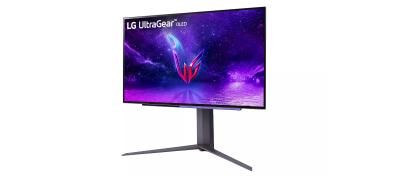
Click here for our comprehensive list of OLED monitors.
Further reading
Veeo launches transparent 30" and 55" OLED monitors with a behind-the-screen camera
US-based Veeo announce a new display called the T30, that is based on a transparent OLED panel with a behind-the-display camera. The T30 is a monitor that enables video communication with an aligned user line of sight.
The T30 is offered in two models, 30" and 50", both based on LG's transparent WOLED panels. Veeo will announce the price of its transparent OLED monitor towards the end of 2023.
LG's OLED TV and monitor panels are the first to earn the Circadian-Friendly certification from TÜV Rheinland
Independent testing and certification leader TÜV Rheinland has awarded LG's OLED TV and monitor panels with its 'Circadian Friendly' certification. LG's OLEDs are the first displays to ever receive this award.
TÜV Rheinland new 'Circadian Friendly' certification is given to products that meet the standards of minimizing their impact on people's quality of life during the day and promote better sleep at night. These products undergo rigorous testing based on the 'Circadian Stimulus' metric, designed by the Rensselaer Polytechnic Institute's Lighting Research Center.
DSCC: OLED panel revenues to decline in 2023, in a second consecutive year
DSCC says that OLED panel revenues will decline 7% in 2023 (to $38.9 billion), the second consecutive year that the OLED market is seeing a decline in sales. The largest declines will be in the OLED TVs and laptops segments.
The OLED smartphone market will actually grow 4% in unit sales, but revenues will decline 5%. The OLED TV market will decline 29% in 2023 in both revenues and units. OLED laptop unit sales will decline by 15%. All other segments, including AR/VR, automotive and tablets, will grow in sales and revenues in 2023.
Merck launches new highly-effective ALD OLED encapsulation materials
Merck introduces new OLED encapsulation materials that the company says offer superior flexibility, higher reliability, and longer lifetime for flexible devices compared to existing solutions.
Merck says that its new low-temperature ALD silicon materials offer highly improved barrier characteristics - 100 times more effective than current solutions. And they can be deposited in thin layers - 20 times thinner than existing solutions. Merck introduced low-temperature ALD silicon materials in 2022 for automotive OLED, and the company expects that the new materials will be used for the encapsulation of flexible IT OLED displays (laptops, tablets and monitors).
BOE is facing delays in its plan to build an 8.5-Gen IT OLED line
BOE has plans to construct an 8.5-Gen AMOLED production line with a capacity of 30,000 monthly substrates to produce IT displays for laptops, tablets and monitors. The company aims to build the B16 factory in Chengdu, Sichuan.
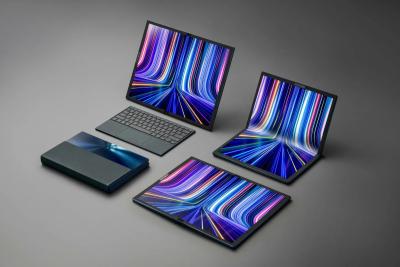
Asus ZenBook 17 Fold OLED (BOE panel)
According to Korea's ETNews, BOE is facing delays with its B16 plans. The company is seeking support from the local government, but it has yet to gain support.
LG reports its results for Q1 2023: decreased sales as demand is sluggish, delays P10 fab in Paju
LG Display reported its financial results for Q1 2023, with revenues of 4,411 billion Won ($3.3 billion USD), down 40% from the previous quarter and 32% from 2022.
The company says there is 'sluggish demand' for TV and IT products. The company plans to focus on automotive displays, smartphone OLEDs and IT OLEDs (mid-sized panels). LG also aims to increase its sales of OLED gaming monitor panels and transparent OLED displays.
Omdia: Apple to switch to OLED displays in almost all of its tablets, laptops and monitors by 2027
Omdia released its latest IT OLED display forecasts, with some interesting projections.
The company sees very nice growth ahead for OLED displays in the IT market, with shipments rising from around 9.7 million units in 2022 to over 70 million units in 2028. Most of the growth will come from adoption in laptops, but tablet adoption will also increase sharply.
Samsung Display to invest $3.1 billion to convert an LCD fab to an IT 8.5-Gen AMOLED line
In August 2022, Samsung Display announced that the company decided to build a 8-Gen (2200x2500 mm) production line, which will begin production in 2024. The company now updated that it will convert an existing LCD line in Asan, South Chungcheong province, Korea - and the total cost of the project is $3.1 billion. Samsung Display received government subsidy for this project.
Samsung says that the new production line will enable it to more than double its AMOLED tablet panel production. The company acknowledges the drop in demand for displays in general, but the company expects that demand for premium mid-sized panels will keep increasing.
DSCC: OLED revenues to decline 7% in 2023, due to low demand for TV and smartphone panels
DSCC estimates that the OLED market will contract 7% in 2023, by revenues, to reach $38.7 billion. In terms of shipments, there will be a 1% decline from last year.
The two main OLED markets, smartphones and TVs, will both decline - OLED smartphone revenues will decline by 8% in 2023 (shipments will remain the same), while OLED TV panel revenues will drop 15% (12% by shipments).
LG Displays adopts its MLA technology to its new gaming monitors
Last month LG Display announced its META technology, which is a micro-lens array (MLA) that increases OLED brightness by around 60% and viewing angles by 30%. The MLA technology was first adopted in LG's high-end TV panels.

According to reports from Korea, LGD is now applying MLA to its gaming monitors, as it sees the growing gaming market as an important one for its future growth.
Pagination
- Previous page
- Page 3
- Next page
